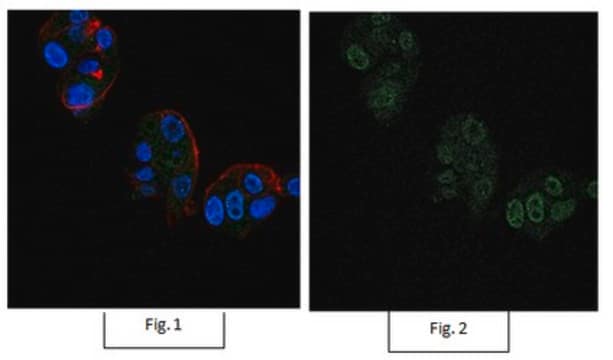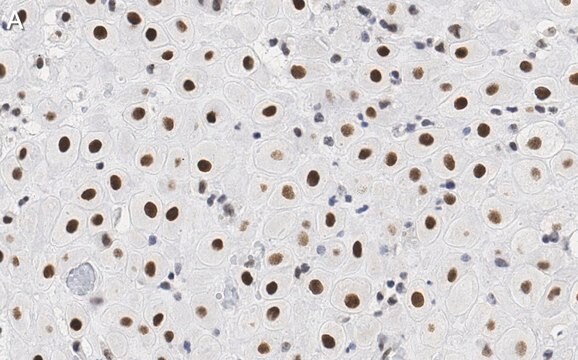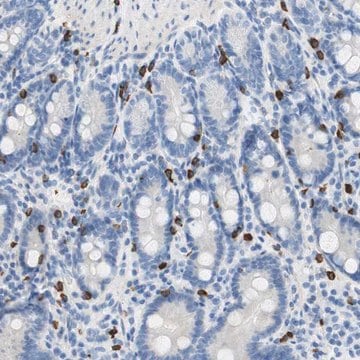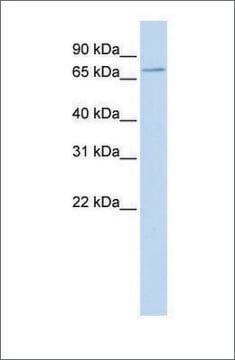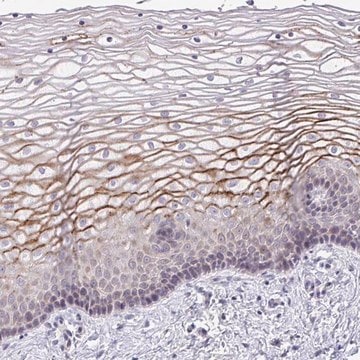SAB4200034
Anti-BMI1 (C-terminal) antibody produced in rabbit
~1.0 mg/mL, affinity isolated antibody, buffered aqueous glycerol solution
別名:
Anti-B lymphoma Mo-MLV insertion region 1 homolog, Anti-PCGF4, Anti-Polycomb group RING finger protein 4, Anti-RNF51, Anti-Ring finger protein 51
サイズを選択してください
¥65,250
サイズを選択してください
About This Item
¥65,250
おすすめの製品
由来生物
rabbit
結合体
unconjugated
抗体製品の状態
affinity isolated antibody
抗体製品タイプ
primary antibodies
クローン
polyclonal
フォーム
buffered aqueous glycerol solution
分子量
antigen ~37 kDa
交差性
human
包装
antibody small pack of 25 μL
濃度
~1.0 mg/mL
テクニック
immunoprecipitation (IP): 2.5-5 μg using lysates of HEK-293T cells over expressing human BMI1
indirect immunofluorescence: 1-2 μg/mL using paraformaldehyde fixed HEK-293T cells over expressing human BMI1
western blot: 2-4 μg/mL using lysates of HEK-293T cells over expressing human BMI1
UniProtアクセッション番号
輸送温度
dry ice
保管温度
−20°C
ターゲットの翻訳後修飾
unmodified
遺伝子情報
human ... BMI1(648)
詳細
アプリケーション
- western blotting[1]
- immunoprecipitation
- immunofluorescence
生物化学的/生理学的作用
物理的形状
免責事項
適切な製品が見つかりませんか。
製品選択ツール.をお試しください
保管分類コード
10 - Combustible liquids
引火点(°F)
Not applicable
引火点(℃)
Not applicable
適用法令
試験研究用途を考慮した関連法令を主に挙げております。化学物質以外については、一部の情報のみ提供しています。 製品を安全かつ合法的に使用することは、使用者の義務です。最新情報により修正される場合があります。WEBの反映には時間を要することがあるため、適宜SDSをご参照ください。
Jan Code
IXO15024:
SAB4200034-VAR:
SAB4200034-BULK:
SAB4200034-200UL:
SAB4200034-25UL:
最新バージョンのいずれかを選択してください:
アクティブなフィルタ
ライフサイエンス、有機合成、材料科学、クロマトグラフィー、分析など、あらゆる分野の研究に経験のあるメンバーがおります。.
製品に関するお問い合わせはこちら(テクニカルサービス)